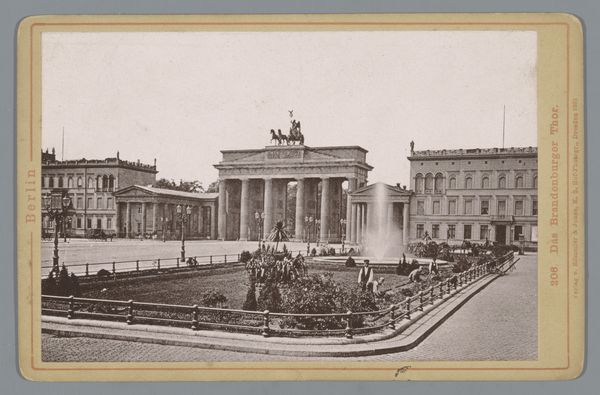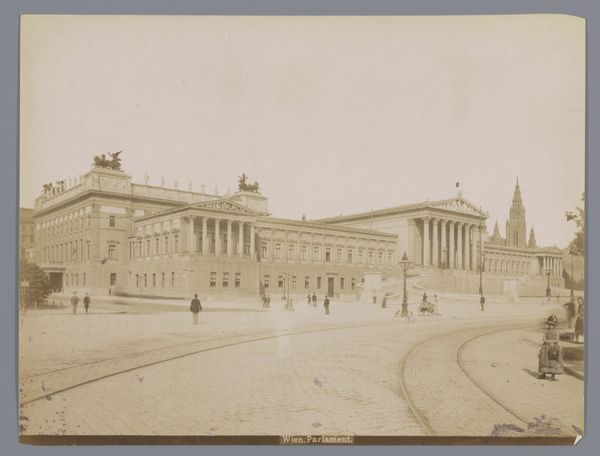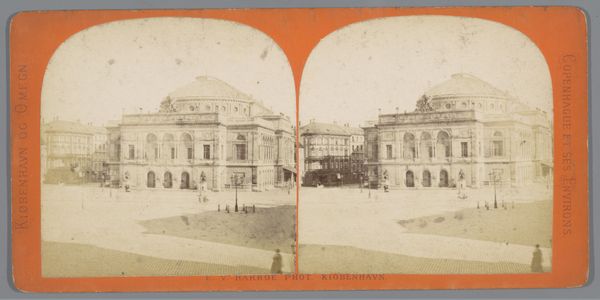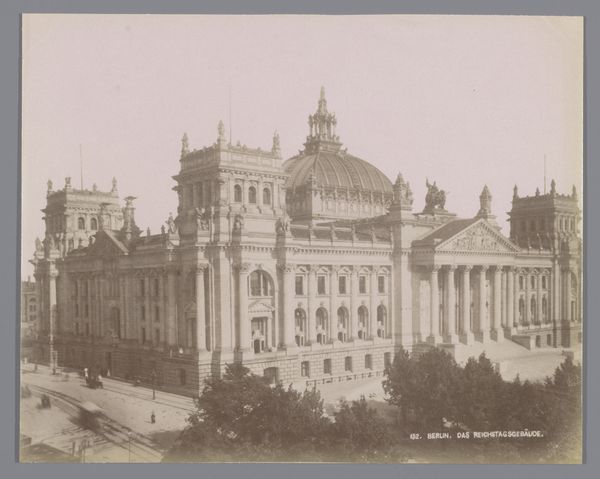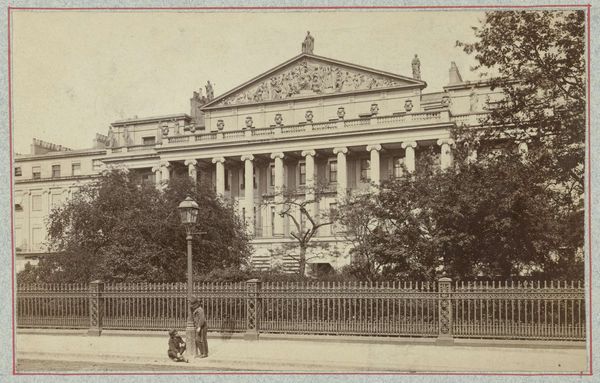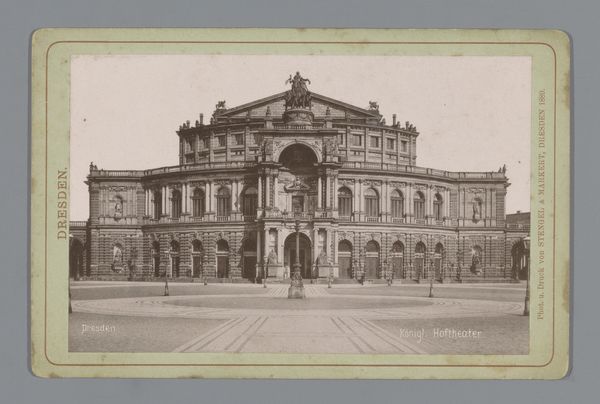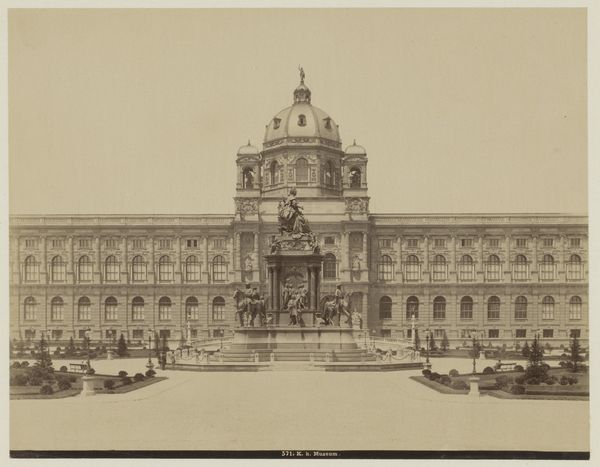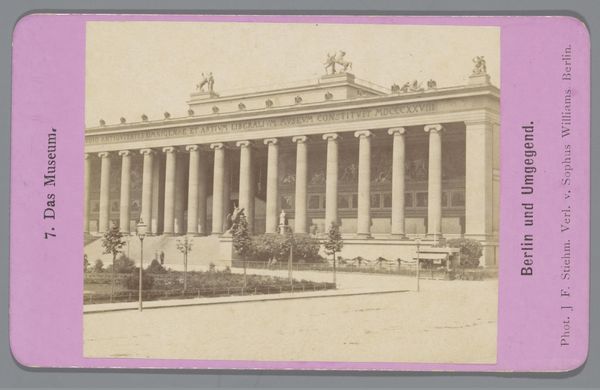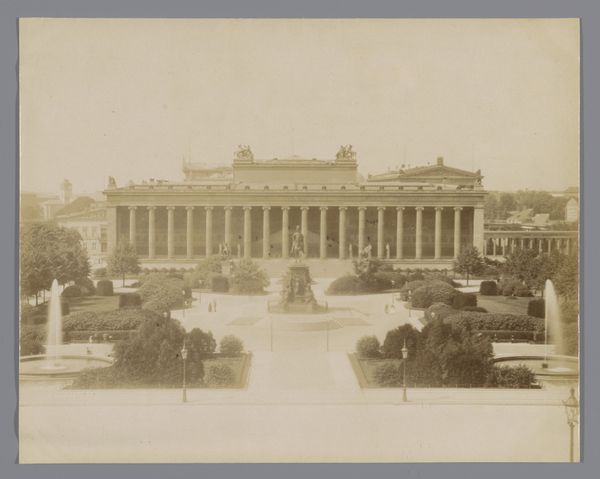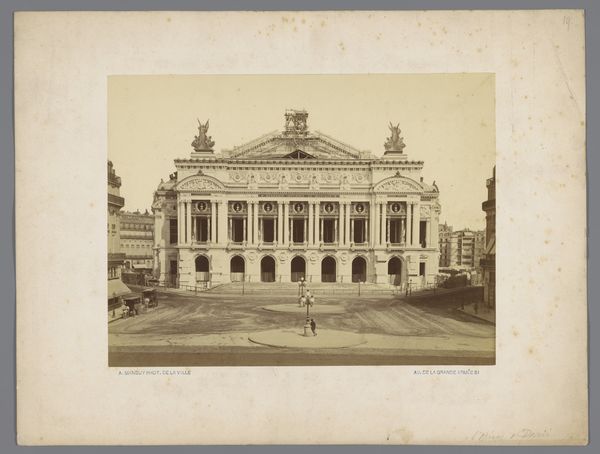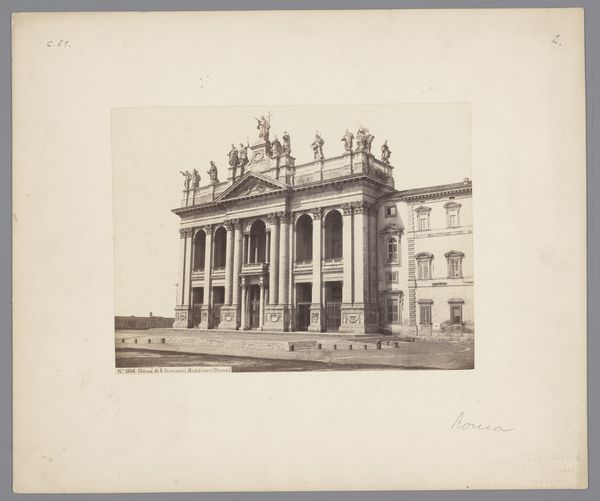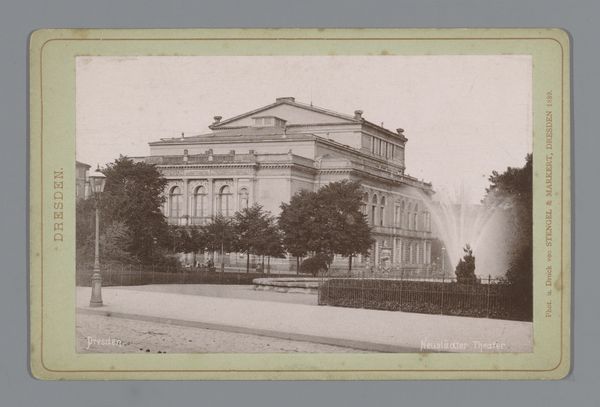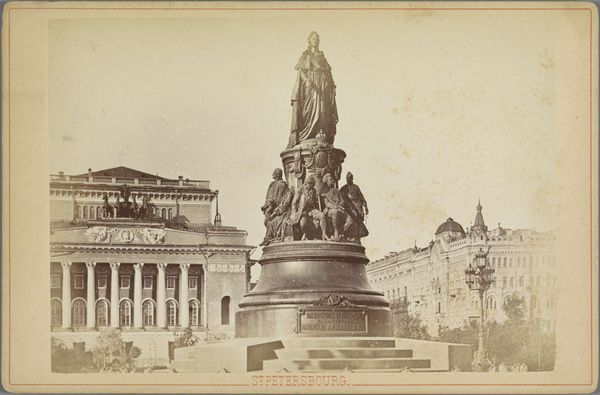
Dimensions: height 109 mm, width 168 mm
Copyright: Rijks Museum: Open Domain
Curator: Here we have an albumen print titled "Gezicht op het Konzerthaus Berlin," dating back to 1880, captured by Sophus Williams. Editor: The first thing that strikes me is the imposing architecture. It's all sharp angles, hard stone, with this almost theatrical presence. Curator: Absolutely. It embodies a neoclassical style, prevalent at the time, reflecting power and order. The print offers a glimpse into Berlin’s urban landscape during a period of rapid transformation. Consider the historical context: Berlin was on the cusp of major industrial and social shifts. Editor: Right, and that stark composition tells us something about that context. Look at the labor implied: the quarrying of stone, the transport, the carving. Each pillar is a testament to the physical exertion embedded within this 'high art' structure. And that material—albumen—derived from egg whites, a whole separate industry supporting the photographic arts. Curator: That's a crucial material point. Thinking of materiality, though, this photographic image further reinforced societal structures. This Konzerthaus represented cultural capital, accessible mainly to the elite. Who was depicted in photography, who controlled its means? These were, and remain, potent questions of representation. Editor: Precisely! This wasn’t just about documenting architecture. It was also about framing who belongs, whose city this is. Look at the street, seemingly empty but swept, manicured; the landscaping planned; even that the building's name is clearly visible. This isn't just about aesthetics; it's about power, production, and access. Curator: By analyzing photography from a critical lens, we can better understand the power dynamics and social hierarchies that shaped its creation. It provides us a glimpse of a 19th century architectural monument that in and of itself serves as a monument to 19th century society and social structure. Editor: Yes, and thinking about how the materials, production methods, and aesthetic choices all coalesce really brings home the human, and specifically social and political labor behind this image and the building depicted. Curator: Thinking critically about these photographs moves us beyond passive viewing toward a deeper appreciation of history. Editor: And beyond aesthetics into the realm of societal influence.
Comments
No comments
Be the first to comment and join the conversation on the ultimate creative platform.
